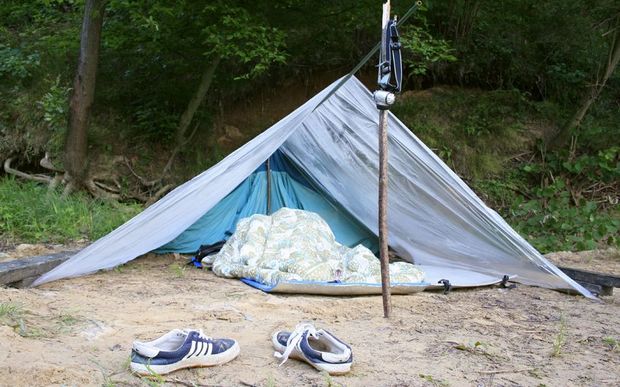First published:
Feb 25, 2004
Nobody will blame parents, students and local officials for feeling suspicious about the recent public consultations held by the Kawartha Pine Ridge District School Board in Port Hope and Cobourg.
Cobourg, Hamilton Township Trustee Gord Gilchrist completely undermined any good faith by announcing his preference for the closure of four elementary schools and the construction of a single new high school in Cobourg.
So much for any consultation process, since it is obvious the local trustee has already made up his mind. Sure, board superintendent Maureen Moloney backpedaled furiously saying a final decision was in the hands of the entire board, not a single member. But we all know the other trustees will be looking to Mr. Gilchrist for direction since he is the local representative.
Honestly, it is a miracle everyone in the room didn’t just walk out. One only has to recall the Thomas Gillbard closure and sale to be reminded of the mistrust engendered by the school board.
Thankfully, things went a bit smoother in Port Hope. But parents watching the debacle in Cobourg will certainly have their faith shaken, too.
If officials and parents share the concern about quality education, then we must move away from the bigger is better mentality. There is clear research on the educational and social benefits of small schools and the negative effects of large schools on students, teachers and the community. As well, there is a diseconomy of scale with large schools; officials fail to take into account.
Dollars & Sense: the cost effectiveness of small schools is one such report. The Knowledge Works Foundation, The Rural School and Community Trust and Concordia LLC, based in New Orleans, did this American study in 2002. It looked at 489 schools built between 1990 to 2001. In all cases, the school boards were looking to consolidate resources, similar to the plans being examined by Kawartha Pine Ridge school board.
The study found similar trends to what is happening in Ontario. The bigger is better trend was rampant. State governments were passing laws and policies promoting larger schools. School board were discouraging renovation and maintenance, claiming the costs were prohibitive. Ironically, older, smaller schools were built to last. Often it is the newer schools, built since the 1960s that are poorly constructed and hence create the problems. The study found the cost of new construction did not take into account ancillary costs of transportation of students, infrastructure, along with social costs. But more on that later.
The evidence supporting smaller schools in overwhelming, but often ignored, according to the study. While there are a number of definitions, a small school is less than 300 students in elementary and 400 in high school. There are also cases made for schools being less than 200 students. While the study does not suggest class size, the Ontario government has recommended ratios of one teacher to about 25 students in elementary and one to 22 students for high school.
Smaller schools are safer, better places for students to work with teachers who know them and whom they can trust. Smaller schools graduate higher percentages of students and drop out rates are lower. There is less violence, less vandalism, a higher sense of belonging and better attendance, the study found. Students also participated in more extracurricular activities. There is less competition and a greater opportunity to excel.
There is also a stronger sense of community as parents, relatives and nearby residents tend to be more involved in a smaller school than compared to their larger counterparts.
But the most stunning facts were the economic ones.
Researchers at New York University Institute for Education and Social Policy looked at 128 high school budgets for the fiscal year 1995 to 1996. Small schools with fewer than 600 students spend more than $7,500 per student. That is more than $1,400 more than students in larger schools of 2,000 students or more.
However, when the researchers looked at the cost per graduate (in other words, the total cost over the entire length of time in school) it was $49,553 per student in the smaller schools and $49,578 for larger ones. A $25 difference between the two.
None of this takes into account the social costs. Larger schools face higher drop out rates. These people end up on welfare, experience poorer health and often find themselves in trouble with the law. And all of these services are paid for through taxes, usually at a higher cost than maintaining a smaller school.
The study also found larger schools ended up having higher operational costs because administration, security, maintenance and operation staff needs.
Finally, smaller schools are more flexible and dynamic places. Principals, teachers, parents and the community can respond to change and can communicate more effectively in order to meet the needs of students.
It will take a mighty wind of change to blow through the halls of the school board before anyone will believe the smaller is better approach will work. Unfortunately parents don’t have the same resources and time to devote to formulating options as compared to the school board.
But parents and members of the community should not despair. As Port Hope parents demonstrated, it is possible to stem the tide. If an effective, coherent effort is made, the board must listen. The evidence is strong, if not overwhelming. It is necessary for trustees and bureaucrats to consider it equally.
And the board’s recommendations do offer an option of status quo.
In the meantime, Mr. Gilchrist should step down from the process. He is bias and declared himself as already having made up his mind. While it is jarring to hear him, maybe Mr. Gilchrist has done us a favour. He has exposed the ludicrous pretense that there is a public process which is credible and open. It will take a great deal to convince parents and the community this is not rigged.
And the board needs to acknowledge the mountains of evidence regarding the benefit of smaller schools. That may be a good first step in rebuilding trust between the board and the public. And it may give relief to parents who do not want to see their kids placed in teaching factories rather than schools.
For further information about small schools, class sizes and the study mentioned in this column, come to the website http://considerthis.onlinedemocracy.ca


